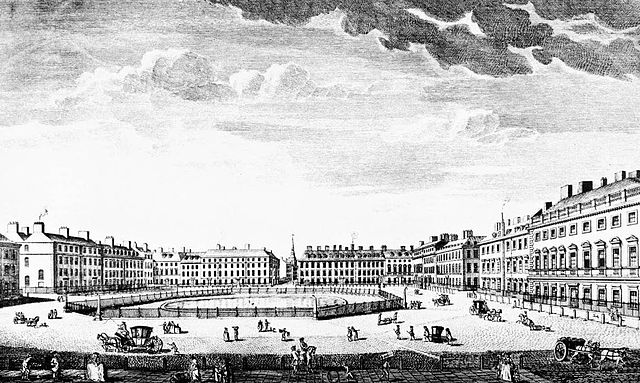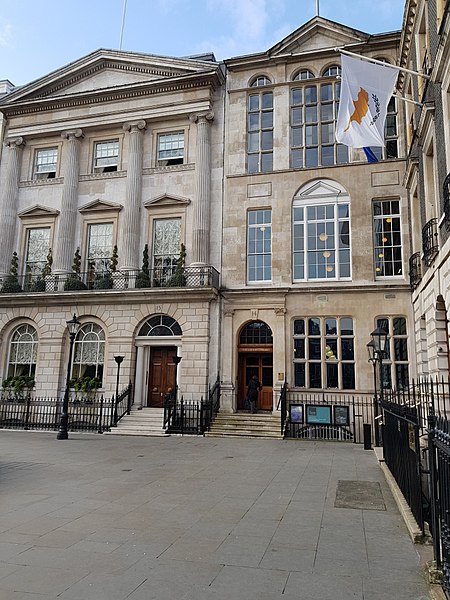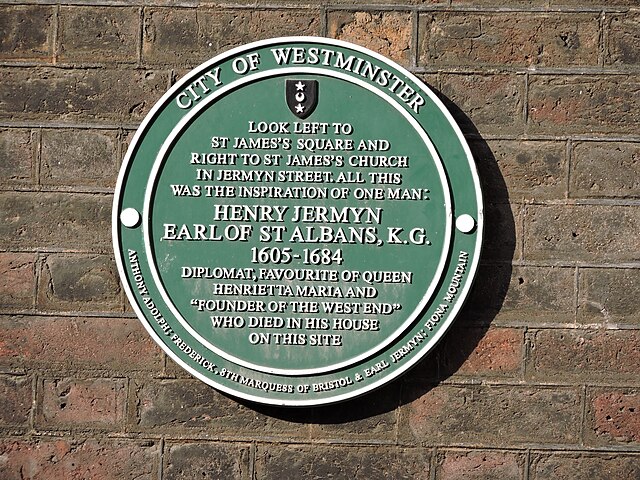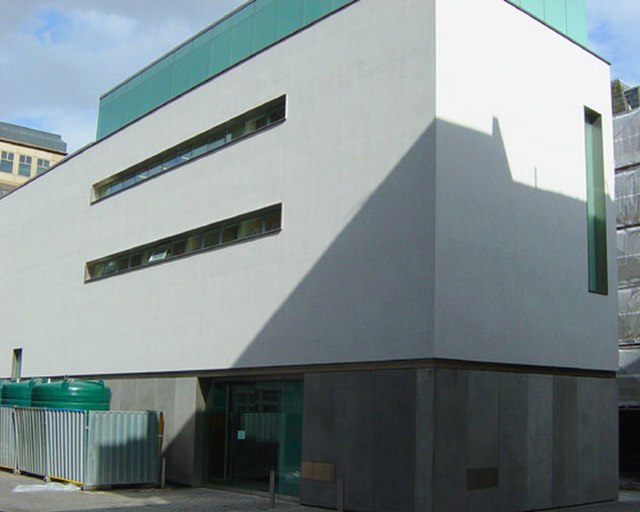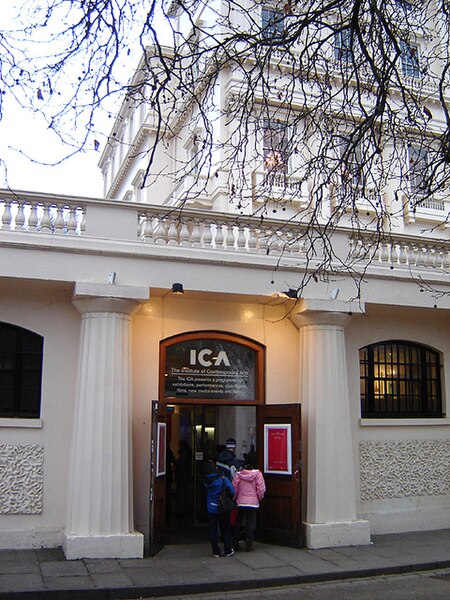St James's Square is the only square in the St James's district of the City of Westminster and is a garden square. It has predominantly Georgian and Neo-Georgian architecture. For its first two hundred or so years it was one of the three or four most fashionable residential streets in London. It now has headquarters of a number of well-known businesses, including BP and Rio Tinto Group; four private members' clubs, the East India Club, the Naval and Military Club, the Canning Club, and the Army and Navy Club; the High Commission of Cyprus; the London Library; and global think tank and peace-promoter Chatham House.
The statue of William III by John Bacon at the centre of the square
St James's Square circa 1752.
St James's Square in 1799
15 and 14 St James's Square
St James's is a central district in the City of Westminster, London, forming part of the West End. The area was once part of the northwestern gardens and parks of St. James's Palace. During the Restoration in the 17th century, the area was developed as a residential location for the British aristocracy, and around the 19th century was the focus of the development of their gentlemen's clubs. Once part of the parish of St Martin in the Fields, much of it formed the parish of St James from 1685 to 1922. Since the Second World War the area has transitioned from residential to commercial use.
Fortnum & Mason flagship store, Piccadilly
City of Westminster green plaque for Henry Jermyn, Earl of St Albans (1605–1684), located in Duke of York Street, London SW1
White Cube gallery in Mason's Yard, St James's
Institute of Contemporary Arts


